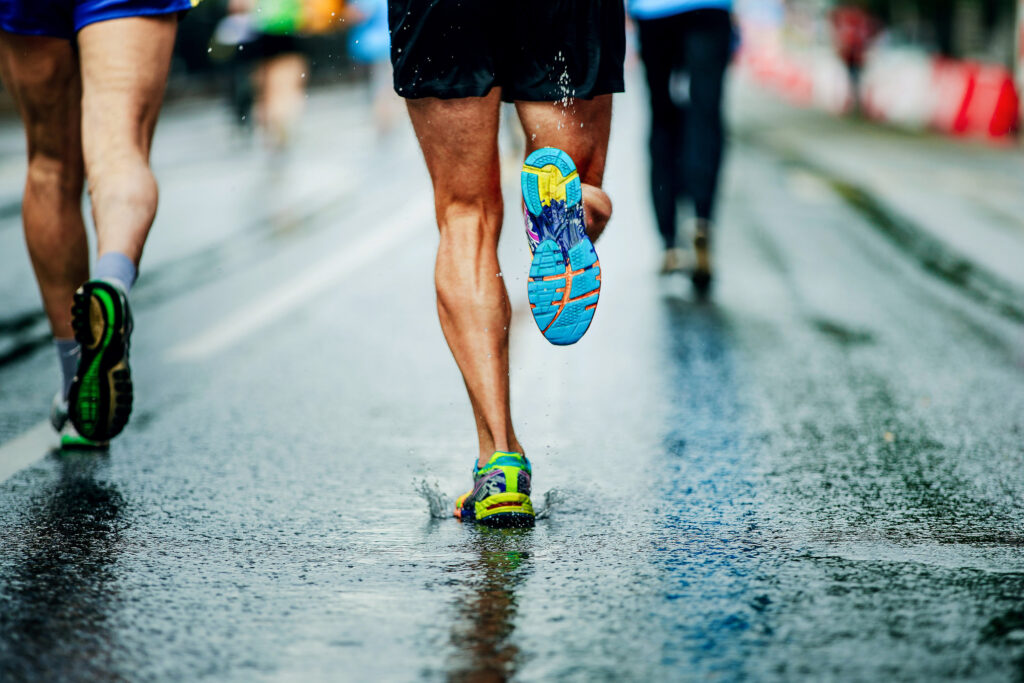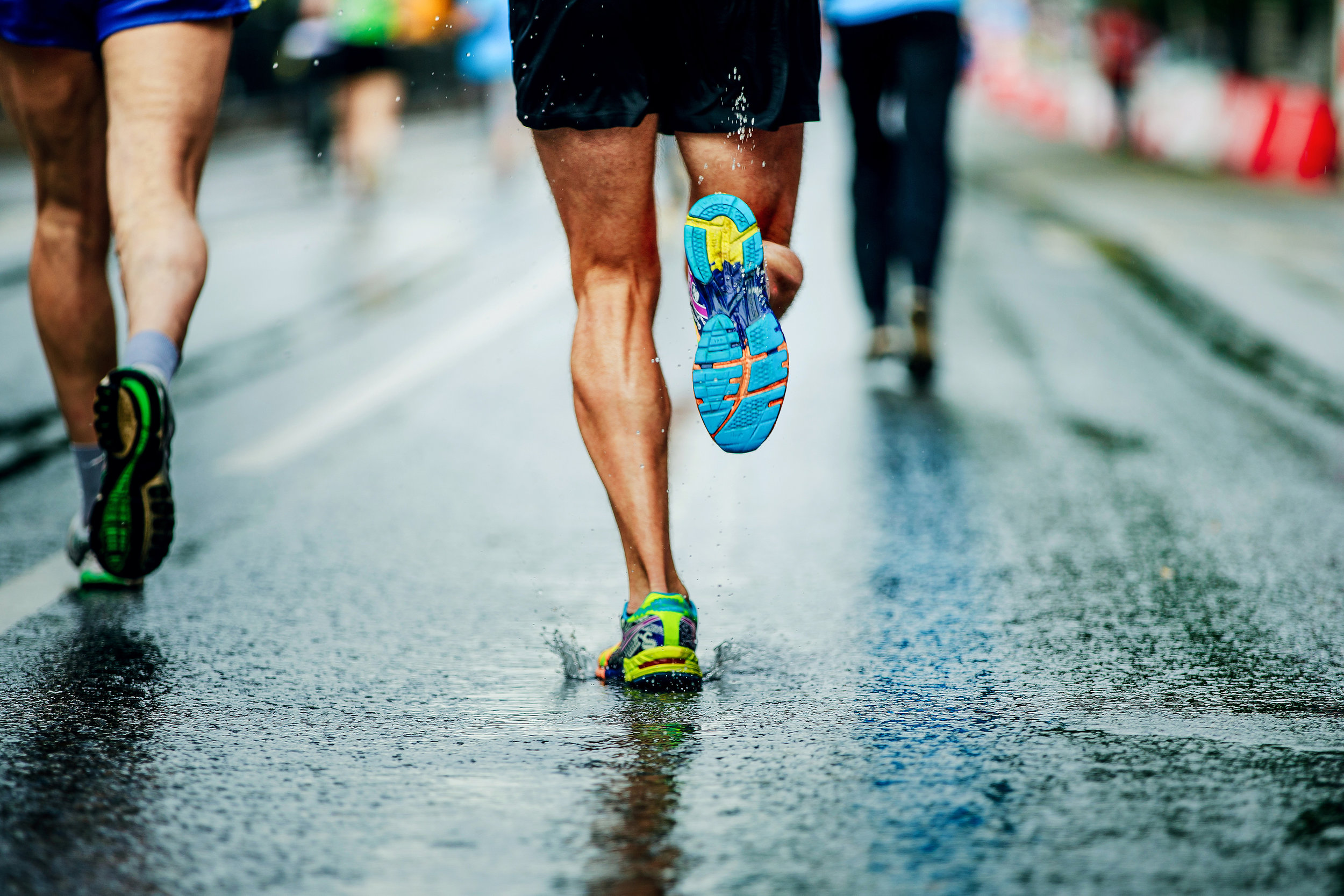Use these four tips to safely and effectively increase your running cadence.
In last week’s blog, I wrote in detail on how increasing your running cadence can clear up nagging aches and pains while improving running performance, and this week we’re delving into how to actually do it – specifically four tips that will safely and effectively help you increase your running cadence.
So let’s get right into it!
1 – Increase running cadence by a maximum of 10% at a time
The research shows that increasing running cadence by over 10% at one time – so for example, if your running cadence is 170 spm, anything over 188 steps per minute (spm) – leads to increased energy expenditure and reduced running economy (1,2) aka less efficient running.
Therefore it’s crucial to not increase cadence by more than 10% at one time. I recommend 2-3% increments until you hit that 10% mark. This incremental, methodical change allows your mind and body to adapt appropriately and safely, for example:
-
Your muscles need to adapt to the different loads being put on them. With an increased running cadence and shorter stride, your knee will be more flexed when it touches the ground and your quads have to eccentrically control the flexion. This isn’t a bad thing as this is what the quads were intended to do but they still need time to acclimate.
-
Your neuromuscular system needs time to get used to a new running pattern. You may feel “weird” when you’re first implementing the change because you’re so used to running at a certain cadence. It’s like trying to change any other hardwired habit. However, over time, the new running pattern becomes the subconscious new normal.
2 – Introduce the new running cadence gradually
Don’t just go out there and run at the new cadence for the entire distance of the run, that’s not safe or effective. Rather, use a metronome set to new steps per minute rate to give yourself an external cue that you can sync with and begin by running at that new cadence for small parts of your run.
For example, if you’re running 10 miles, run with the higher cadence using the metronome for 1/2 a mile after every 3 miles. As you get more comfortable, you slowly increase that amount and eventually your entire run is at that new cadence. Carryover and longstanding change has to be incremental, as I touched on in #1.
3- Use the cue “chop your steps”
The verbal and mental cue “chop your steps’“ will be a reminder to shorten your stride and increase your running cadence. I got the idea from a high level running client who told me it felt like she was chopping her steps so I started using that cue with other clients to great success.
Additionally, you can also add the cue “land soft”. This helps control the fluidity of your gait and bias your foot and lower body to accept the ground softly rather than hitting heavy/hard and absorbing greater force. For some instant feedback, listen to how much quieter your footsteps when using the cue vs not.
I combine both cues into a repeatable mantra – “chop your steps, land soft, chop your steps, land soft” – creating a rhythm while reminding your mind & body of the new pattern. As the new pattern becomes the new normal, the cues fade away.
4 – Visualize the shorter stride and soft landing
Before any run (or during), visualize yourself running with a shorter stride and soft landing. The research shows that visualization can prime the system for a specific movement and help with motor learning because it activates similar pathways in the motor cortex as the movement itself (3-9). This can expedite skill and movement learning with potential carryover to picking up the increased cadence and shorter stride length quicker.
I’ve used these four tips to help many runners safely, seamlessly, and quickly increase their running cadence. By using this same process, I’m confident you’ll be able to hit your new running cadence goals and never look back.
Thanks for reading and, remember, health and performance are two sides of the same coin.
Sources:
1. Heiderscheit BC, Chumanov ES, Michalski MP, Wille CM, Ryan MB. Effects of step rate manipulation on joint mechanics during running. Med Sci Sports Exerc. 2011;43(2):296-302. doi:10.1249/MSS.0b013e3181ebedf4.
2. Moore IS. Is There an Economical Running Technique? A Review of Modifiable Biomechanical Factors Affecting Running Economy. Sports Med. 2016;46(6):793-807. doi:10.1007/s40279-016-0474-4.
3. Milton J, Small SL, Solodkin A. Imaging motor imagery: methodological issues related to expertise. Methods. 2008;45(4):336-341. doi:10.1016/j.ymeth.2008.05.002.
4. Munzert J, Zentgraf K. Motor imagery and its implications for understanding the motor system. Prog Brain Res. 2009;174:219-229. doi:10.1016/S0079-6123(09)01318-1.
5. Sauvage C, Jissendi P, Seignan S, Manto M, Habas C. Brain areas involved in the control of speed during a motor sequence of the foot: real movement versus mental imagery. J Neuroradiol. 2013;40(4):267-280. doi:10.1016/j.neurad.2012.10.001.
6. Schuster C, Hilfiker R, Amft O, et al. Best practice for motor imagery: a systematic literature review on motor imagery training elements in five different disciplines. BMC Med. 2011;9:75. doi:10.1186/1741-7015-9-75.
7. Sheahan HR, Ingram JN, Žalalytė GM, Wolpert DM. Imagery of movements immediately following performance allows learning of motor skills that interfere. Sci Rep. 2018;8(1):14330. doi:10.1038/s41598-018-32606-9.
8. Sobierajewicz J, Przekoracka-Krawczyk A, Jaśkowski W, Verwey WB, van der Lubbe R. The influence of motor imagery on the learning of a fine hand motor skill. Exp brain Res. 2017;235(1):305-320. doi:10.1007/s00221-016-4794-2.
9. Sobierajewicz J, Szarkiewicz S, Przekoracka-Krawczyk A, Jaśkowski W, van der Lubbe R. To What Extent Can Motor Imagery Replace Motor Execution While Learning a Fine Motor Skill? Adv Cogn Psychol. 2016;12(4):179-192. doi:10.5709/acp-0197-1.

